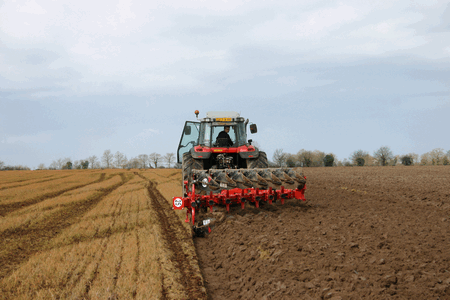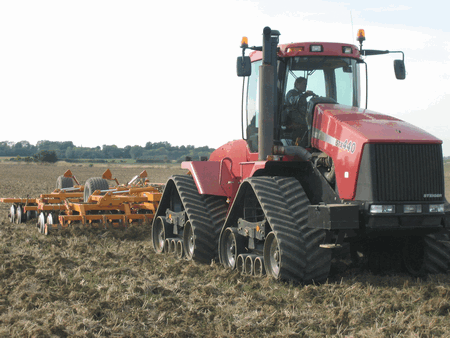Ploughing comes back into favour

Recent increases in arable prices seem to have resurrected the “to plough or not to plough” argument.
Before these rises, the plough was strictly off limits for many farmers. Where it was employed, it was used frugally in areas where soil inversion was considered absolutely essential for weed control.
But this situation may now be changing, and ploughing once again appears to be a serious option when establishing crops. That’s what the latest plough sales figures from the Agricultural Engineers Association suggest, with the number of ploughs sold in 2007 running 50% higher than the previous year.

Are high incomes for cereal growers encouraging a greater use of the plough?
The AEA reports a substantial increase in the number of ploughs purchased.
Some of this may be growers replacing ploughs that had become old and prohibitively expensive to maintain, but it is still a substantial increase. More interestingly, the sales figures also show that it is five-furrow and larger ploughs which have made the most gains in the sales league – a sign perhaps, that it is large-scale growers that are looking to use the plough.
There are, of course, growers for whom min-till techniques have worked well and will continue to do so, but there is also a proportion of growers who consider they have been forced into such practices to counter diminishing returns.

Min-till, while being quick, provides many growers with an annual challenge
to control weeds such as black grass and brome.
And it is these who might just welcome an opportunity to be able to return to the plough, with its opportunity to bury all evidence of previous crops and allow them to drill into a clean, well prepared tilth.
But are such yearnings justified? Aesthetically pleasing as clean seed beds clearly are, can the cost of creating such conditions now be truly justified, even if the value of the resulting crop is significantly higher?
Plough or not to plough?
FOR
- It’s a traditional farming skill – a good ploughman still commands the respect of the industry to this day.
- Great for burying previous crop residues and creating a clean start for the next one. Inverting the soil also helps to contain weed populations and reduces ever-greater reliance on chemical controls.
- The turning action of the soil also provides some beneficial aeration and the overall loosening effect can lead to improved root development in the following crop.
- Helps to maintain the overall condition of land.
Against
- Cost. With red diesel above 60p/litre and typical fuel consumption running at 16 litres/ha ploughed, there are some real costs involved. When labour, tractor and implement costs are totalled, ploughing costs at least £35/ha. Add in the cost of secondary cultivations and drilling and the total establishment costs rise to nearer £100/ha – about double that of min-till although the high cost of min-till equipment should also be a consideration.
- It’s relatively slow – that means you may not get all the land you want tilled and drilled in the limited autumn tillage window available.
- On heavy land, bringing raw clay to the surface is not without its challenges when it comes to creating a seed-bed, and on really light land ploughing may cause wind erosion problems. Ploughing can also create an impermeable plough pan that needs to be broken by subsoiling and the use of heavy tractors may, in itself, cause compaction problems.

